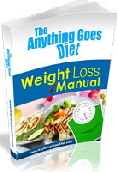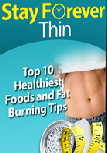
Know Facts
To Know Or Not To Know …




Calcium
In our body about 1.4% is calcium. Calcium is an essential component of a healthy diet and a mineral necessary for life.
Approximately 99 percent of the body's calcium is stored in the bones and teeth as calcium phosphate and some calcium sulphate. Calcium can be released from bone by the action of the parathyroid hormone.
The rest of the calcium in the body has other important uses, such as neurotransmitter release and muscle contraction.
Calcium ions are actively pumped out of the cells using adenosine triphosphate (ATP) as energy source. Calcium ions are among the most widespread second messengers in signalling between cells in neural and muscular tissue.
Vitamin D is needed to absorb calcium.
Sources
Dairy products, such as milk and cheese, are well-
 If your are intolerant to lactose (in milk) there are other good sources of calcium
including seaweeds such as kelp, wakame and hijiki, nuts and seeds like almonds,
hazelnuts, sesame, pistachio, blackstrap molasses, beans, figs, quinoa, okra, rutabaga,
broccoli, dandelion leaves, kale, and fortified products such as orange juice and
soy milk.
If your are intolerant to lactose (in milk) there are other good sources of calcium
including seaweeds such as kelp, wakame and hijiki, nuts and seeds like almonds,
hazelnuts, sesame, pistachio, blackstrap molasses, beans, figs, quinoa, okra, rutabaga,
broccoli, dandelion leaves, kale, and fortified products such as orange juice and
soy milk.
An overlooked source of calcium is eggshell, which can be ground into a powder and mixed into food or a glass of water.
Daily intake
The recommended daily calcium intake for adults is 1000 to 1300 mg. Proper vitamin D status is important for calcium absorption.
The Tolerable Upper Intake Levels (ULs) for calcium are 2.0 to 2.5 grams per day for adults. Here is a list of foods having the highest content of calcium.
Deficiency
Long- absorption
-
absorption
-
In menopausal women and elderly men calcium deficiency can lead to osteoporosis (porous, brittle bones) with reduced bone mineral density (BMD) and deteriorating microarchitecture leading to an increased risk of fractures.
Calcium deficiency can also lead to poor blood clotting.
Low calcium concentration in the blood (hypocalcemia) may occur. This can lead to tingling or 'pins and needles' sensation in and around the mouth and lips, and in the extremities of the hands and feet. Muscular cramps may also occur.
Excess
Compared with other metals, the calcium ion and most calcium compounds have low toxicity.
Over-
Copyright: Know Facts -